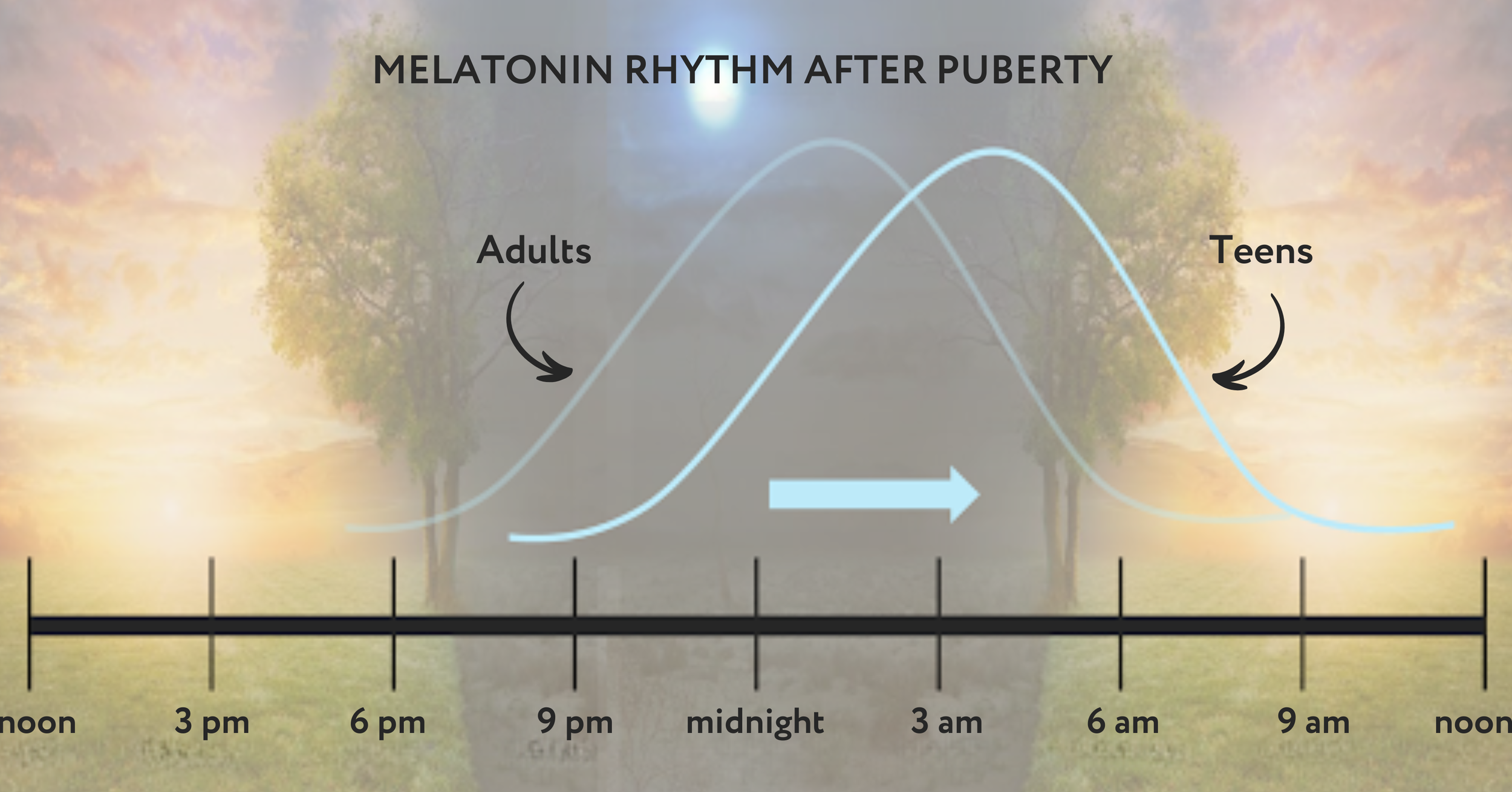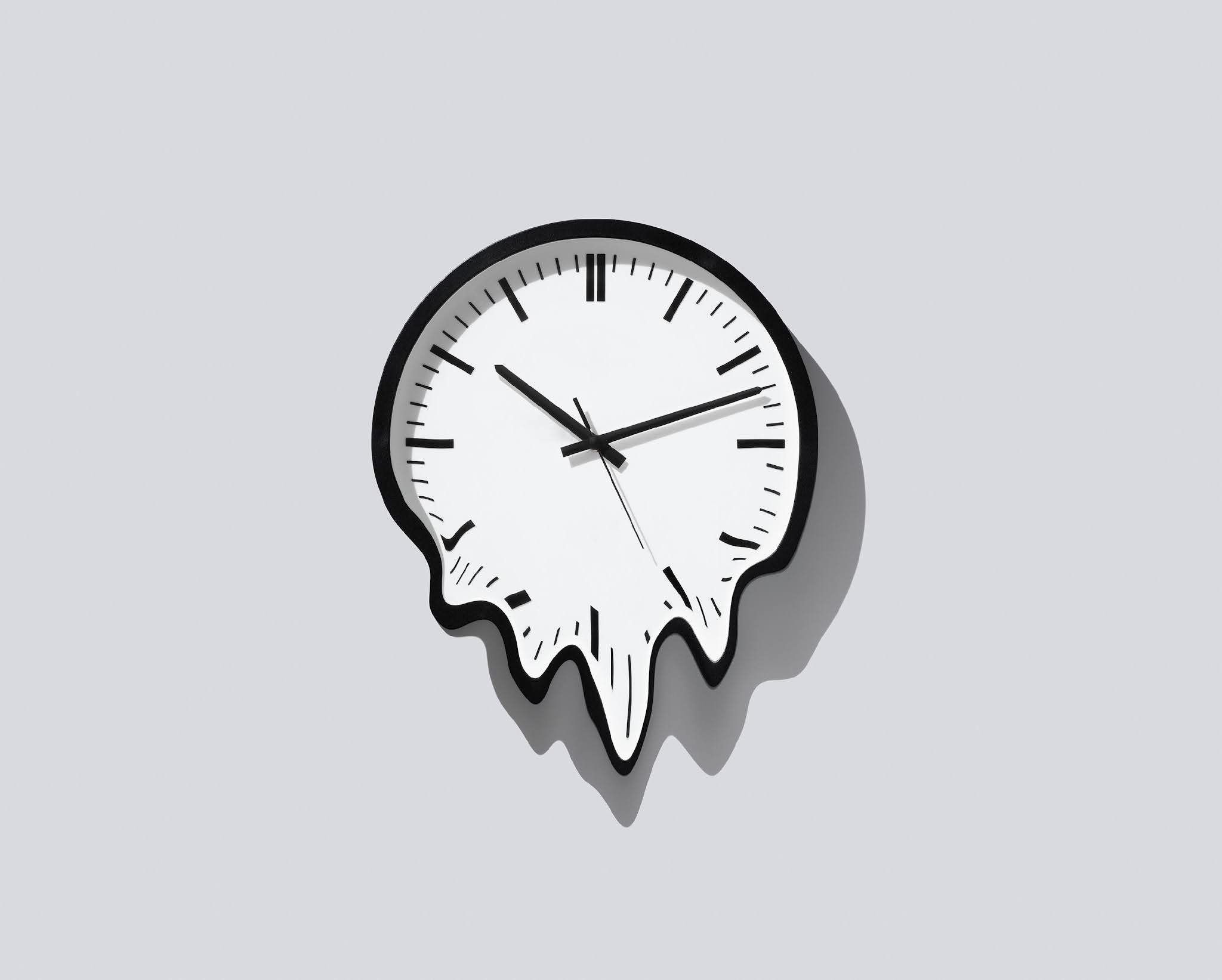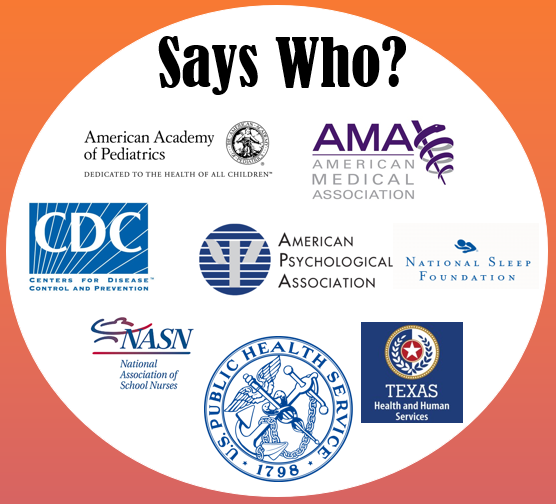The Science Of Teen Sleep: Why we should be aligning school schedules with biology!
The word “teenager” is often associated with terms like laziness, rebellion, and moodiness.
Teens face a lot of unique challenges socially and emotionally. What makes those challenges particularly difficult is the fact that they are utterly exhausted.
I spoke at a meeting for my county’s school district today (Fort Bend ISD). The purpose of this meeting was to discuss an initiative for later high school start times, which is an issue close to my heart. I was asked to present to the school advisory committee the science of adolescent sleep and my goal was to communicate why we should all be advocating for this change. For context, the districts begin classes at 7:30am, which is a full hour earlier than the minimum recommendations (but more on that later…).
I thought I would share some of the details of my presentation here because giving this talk reminded me of the fact that so few people know that there are very dramatic changes that occur within the adolescent sleep-wake cycle and the HUGE implications that it has on the rest of their lives. So here goes.
The Sleep Drive
First off, I want to describe a process that we call “sleep drive.” I want you to think about this process as our appetite for sleep. So just like with hunger cues that increase the longer it’s been since you’ve last had a meal, sleep drive works the same way. The longer it’s been since we last slept, the sleepier we get. This makes sense for all of us on an intuitive level, we’ve all experienced the feeling of increasing sleepiness throughout the day, right? Our sleep drive gradually builds over the course of the day, peaks in the hour or so before bed, and then we fall asleep at night and essentially sleep it off.
But here’s the thing: as a child transitions into an adolescent, the sleep drive starts to build more slowly. They are no longer 8-year-olds who get tired by 8pm. After puberty, their sleep drive allows them to stay awake for longer because it no longer builds quite as quickly as it did when they were children.
The Circadian Phase Shift
On top of the changes in sleep drive that are happening post puberty, there’s also this huge shift in circadian timing. So, I’ll pause here and give you an overview of the circadian clock.
I want you to think about the circadian rhythm as our 24-hour biological clock. Our bodies thrive on routines and rhythms. Every system in the body has a 24 hour rhythm, even down to our individual cells.
So this circadian rhythm is responsible for keeping us connected to the earth’s light/dark cycles. It tells our bodies when to be awake and when to be asleep. On top of that, it also tells us the best time to eat and digest food, it regulates our body temperature, and it even tells our bodies when to release hormones. It is a very intricate system.
Speaking of hormones, one of the most important hormones for us to talk about is melatonin. I’m sure that many of you have hear about melatonin, probably as it relates to the supplement that many people take at night to help them sleep. So I want to share what exactly melatonin is.
I mentioned before that our circadian rhythm is aligned with the light/dark cycles of the earth. How this works is through a brain system called the suprachiasmatic nucleus. Essentially, when our eyes take in light, it sends a message to our brain that it is time to be awake, which leads to the brain sending out alerting signals.
On the flip side of this, in the absence of light, meaning when the sun goes down, this lack of light sends a message to prepare our bodies for sleep. Melatonin is essentially that message. The absence of light cues the pineal gland to release the hormone melatonin, which turns off those alerting signals that I mentioned, to prepare our bodies for sleep.
What does this mean?
So what does this mean for our teens? If they are up and heading to school between the hours of 6 and 7am, they are essentially still within their “biological night.”
Thus, they’re going to have a lot of trouble falling asleep at the same time that they did when they were kids because their sleep drive is building more slowly AND their circadian rhythm is telling them to be alert until well into the night.
If they can’t fall asleep until late and then they have to be up early for school, they’re going to struggle to wake up in the morning and they’re not going to be getting enough sleep.
In fact, studies show that at least 75% of teenagers are sleep deprived, they are not getting even close to the recommended 8-10 hours of sleep per night. And no, teenagers do not really need any less sleep than a child, it’s just that the timing of that sleep has shifted.
Why is Sleep Deprivation a Problem?
So why would it be such a big deal for our kids to be sleep deprived? I’m sure you wouldn't be shocked to learn that not getting enough sleep decreases our kids’ ability to sustain attention. A sleep deprived brain literally cannot hold attention as well as a non-deprived brain. And if they can’t pay attention they can’t learn and their GPA decreases.
Additionally, just like with attention, our brains cannot regulate our emotions well when sleep deprived. Not only that, but a sleep deprived brain actually makes emotions more intense. Being able to control one’s emotions takes a high degree of brain power. Regulation of emotion comes from the upper part of the brain, which requires the highest level of energy and effort to control. It’s actually the part of the brain that is not fully developed until around age 25, so teens are already not working with peak capacity there. So, sleep deprivation results in a highly emotional brain that cannot be easily down-regulated. This leads to frequent and intense changes in emotions and increased vulnerability to conditions like anxiety and depression.
It also impacts health, as our bodies have a difficult time metabolizing foods when we haven’t sleep. This leads to obesity, high blood pressure, high cholesterol, and a host of other problems.
Finally, lack of sleep is a huge safety concern. Motor vehicle accidents are the second leading cause of death in teenagers. Now think about a 16-year-old who has just learned to drive behind the wheel of a car at 6am when they are massively sleep deprived and their body thinks it’s the middle of the night. You can see the dangers in that.
Outcomes of Later School Start Times
My colleague, Dr. Stephanie Ellis, has been advocating for years for these changes in our district. For our meeting today, she pooled together a thorough summary of some of the research that supports this initiative. I’m going to include it here because I believe that it is powerful stuff.
First and foremost, almost every major health organization in the US recommends that high schools should start no earlier than 8:30am. This includes the American Academy of Pediatrics, American Medical Association, National Sleep Foundation, the list goes on and on.
These organizations don’t make decisions like these willy-nilly. They have to see hard evidence that these changes are actually beneficial to students. And that hard evidence is not in short supply. Here’s a summary that Dr. Ellis shared:
Studies that have been done in districts that moved their start times had some very positive results. Later school start times have an impact on just about every facet of a kid’s life, including:
Academic performance: Higher standardized test scores, GPAs, college admissions test scores, graduation rates, and attendance.
Physical health: Healthier body mass index, long-term cardiovascular health, better dietary choices, more physical activity, lower caffeine consumption, and nicotine use.
Mental health: Lower rates of depression, hopelessness, sadness, suicidal thinking and planning; less anxiety, nervousness, worry, and test anxiety; improvements in mood and emotion regulation; better coping strategies (e.g., less rumination and more problem solving); and improvement in student-family interactions.
Safety: Lower rates of alcohol use, drug use, fewer car accidents (especially drowsy driving accidents), fewer other accidents and injuries, including sports injuries, and fewer risky behaviors, including risky sex.
Behavior and delinquency: Improved classroom behavior, fewer suspensions, less physical aggression, and fewer juvenile arrests.
The top three causes of death for people aged 14-25 are accidents (including motor vehicle accidents), suicide, and homicide. Lets talk about how each of these may be impacted by school start times.
Suicide: Later high school start times reduce depression, hopelessness, suicidal thoughts, and attempts. Teens are 11% more likely to attempt suicide in early-start districts. It is important to note here that 22% of high school students seriously considered suicide last year, meaning that this is no small issue.
Homicide: Early high school start times contribute to increased depression, delinquency, violent crime, and impulsivity, while reducing healthy coping skills and family relationships.
Drowsy Driving: Teen drivers, though less than 5% of total drivers, account for over 25% of drowsy driving accidents. Drowsy driving is as dangerous as drunk driving. that year
In conclusion…
I hope that this was enough to convince you how important this topic is. I encourage you to share this information with anyone that you think might find it useful, including parents, teachers, school administrators, even your grandma! The more we educate others on the importance of this issue, the louder our voices become.
And as always, if you have questions or could use support in this or other sleep issues, I’m here. Reach out here: Schedule Now!






